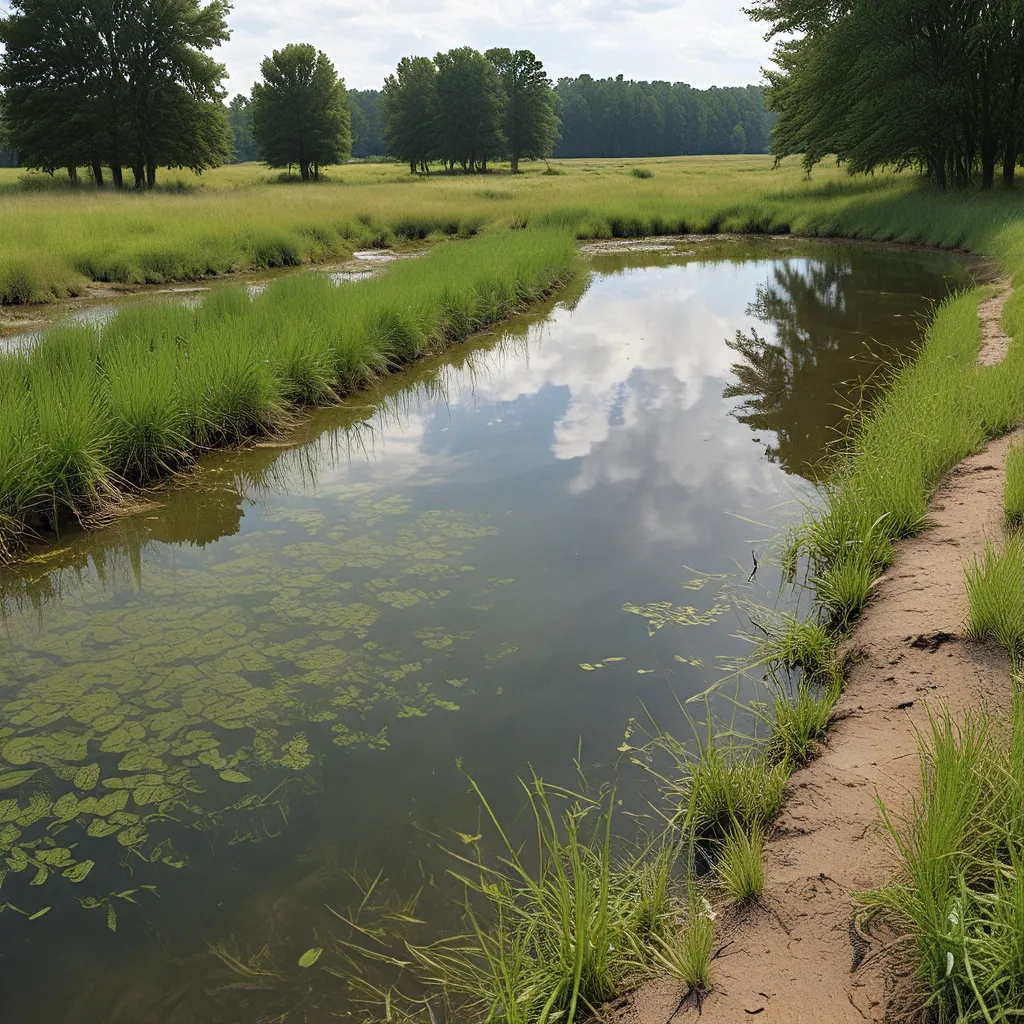
As an environmental enthusiast, I’ve always been fascinated by the innovative ways we can harness the power of nature to solve our most pressing challenges. And when it comes to wastewater treatment, the integration of constructed wetlands as a nature-based solution is truly a game-changer.
Unveiling the Beauty of Constructed Wetlands
Imagine a lush, vibrant landscape where water flows gently through a series of carefully designed ponds and channels, supporting a diverse array of plants and wildlife. This is the beauty of constructed wetlands – an ecological approach to wastewater treatment that not only purifies the water but also creates a thriving habitat for our natural friends.
These engineered systems mimic the natural processes found in wetlands, using a combination of physical, chemical, and biological mechanisms to remove contaminants from the water. As the water meanders through the system, it encounters a diverse array of aquatic plants, microorganisms, and soil media, each playing a crucial role in the purification process.
The Advantages of Embracing Nature
The integration of constructed wetlands into wastewater treatment offers a multitude of benefits that go beyond just water purification. These nature-based solutions can lower the cost of water reuse, gain support from local communities, and even enhance climate resilience through flood protection and sea-level rise adaptation.
One of the primary advantages of constructed wetlands is their cost-effectiveness. Compared to traditional wastewater treatment technologies, these natural systems often require less energy, fewer chemicals, and less maintenance to achieve the desired level of water quality. This makes them an attractive option for utilities and municipalities looking to reduce their operational expenses while still delivering high-quality treated water.
Moreover, the habitat restoration and recreational opportunities provided by constructed wetlands have a profound impact on local communities. By transforming what was once a utilitarian facility into a vibrant, nature-inspired oasis, these projects can gain support and buy-in from residents who appreciate the environmental and social benefits they bring.
In the face of climate change, the integration of constructed wetlands into water reuse projects can also enhance resilience. These nature-based solutions can be strategically designed to help protect water infrastructure from flooding and sea-level rise – two of the most pressing challenges posed by a changing climate. By creating coastal wetlands that can serve as natural barriers, we can reduce the need for costly and often less effective conventional engineering solutions, such as levees and seawalls.
Harnessing the Power of Stormwater Capture
But the benefits of constructed wetlands don’t stop there. These nature-based solutions are also proving to be invaluable in managing stormwater and urban flooding. By incorporating green infrastructure practices like bioretention systems, we can slow the flow of stormwater and allow it to infiltrate the ground, where it can be captured and reused for various purposes.
This approach not only mitigates the risk of urban flooding but also replenishes groundwater supplies and reduces the strain on traditional stormwater management systems. And the best part? These green infrastructure solutions deliver a range of environmental, social, and economic benefits that go beyond just water management, such as improved air quality, increased property values, and enhanced recreational opportunities.
Exploring the Frontiers of Wastewater Reuse
As we continue to push the boundaries of water reuse, constructed wetlands are also playing a crucial role in addressing the challenges of advanced treatment processes, such as reverse osmosis. This energy-intensive technology, often used in potable water reuse applications, generates a concentrated waste stream that can be costly and challenging to dispose of, especially in inland locations.
However, researchers are now exploring the potential of constructed wetlands, specifically horizontal levees, to remove contaminants from this reverse osmosis concentrate in a cost-effective and environmentally friendly manner. By leveraging the natural physical, chemical, and biological processes that occur in these wetland systems, we may be able to find a sustainable solution to this pressing issue.
The Future of Wastewater Treatment: A Symbiotic Relationship with Nature
As I delve deeper into the world of wastewater treatment and constructed wetlands, I can’t help but feel a sense of excitement and optimism about the future. These nature-based solutions are not only improving water quality and enhancing environmental resilience, but they are also reshaping the way we perceive and interact with the wastewater industry.
By shifting the narrative from “dirty and dangerous” to “clean and safe,” we can foster a greater appreciation for the vital role that wastewater management plays in our communities. And as we continue to explore the potential of constructed wetlands and other innovative, nature-inspired approaches, I can’t wait to see how we’ll redefine the future of wastewater treatment and create a more sustainable, resilient world for generations to come.
If you’re as passionate about this topic as I am, I encourage you to explore the wealth of resources available on the Alpha Wastewater Services website. There, you’ll find a treasure trove of information on the latest advancements in wastewater treatment, constructed wetlands, and nature-based solutions. Who knows, you might just be inspired to embark on your own journey of environmental stewardship and sustainable water management.